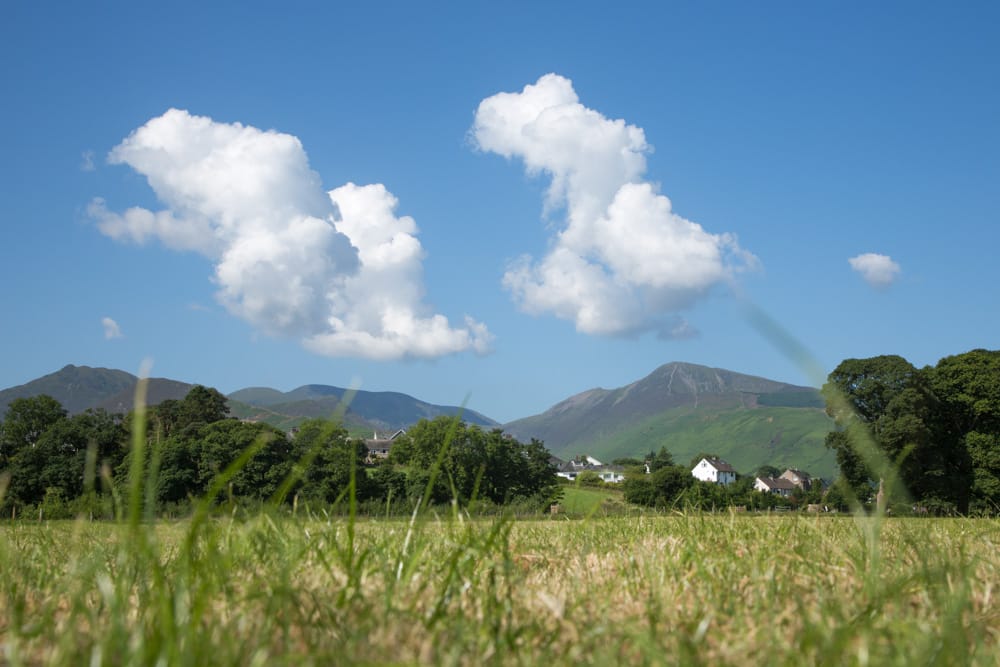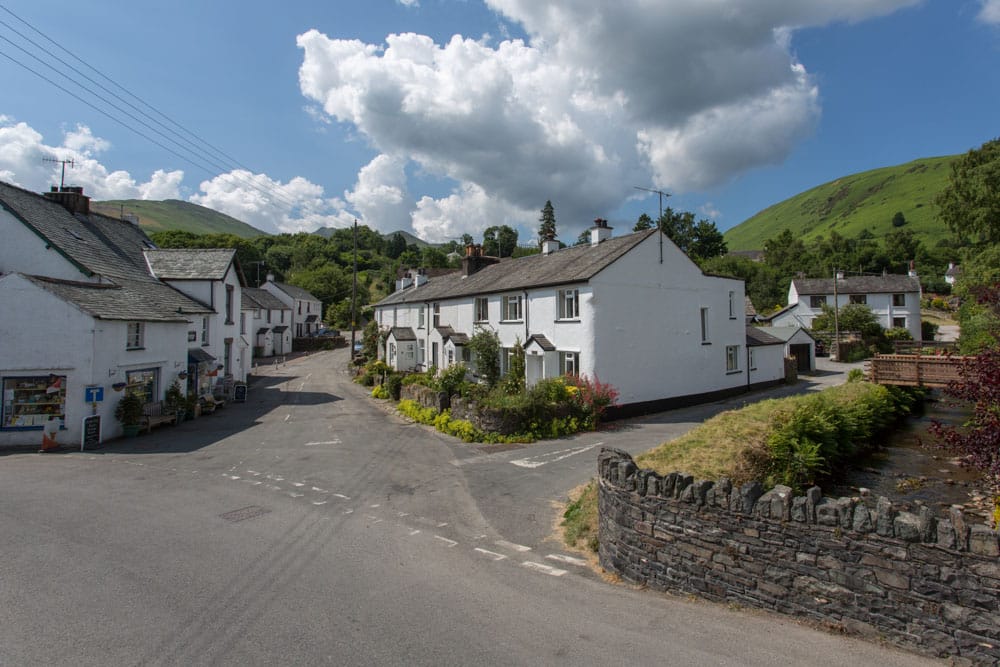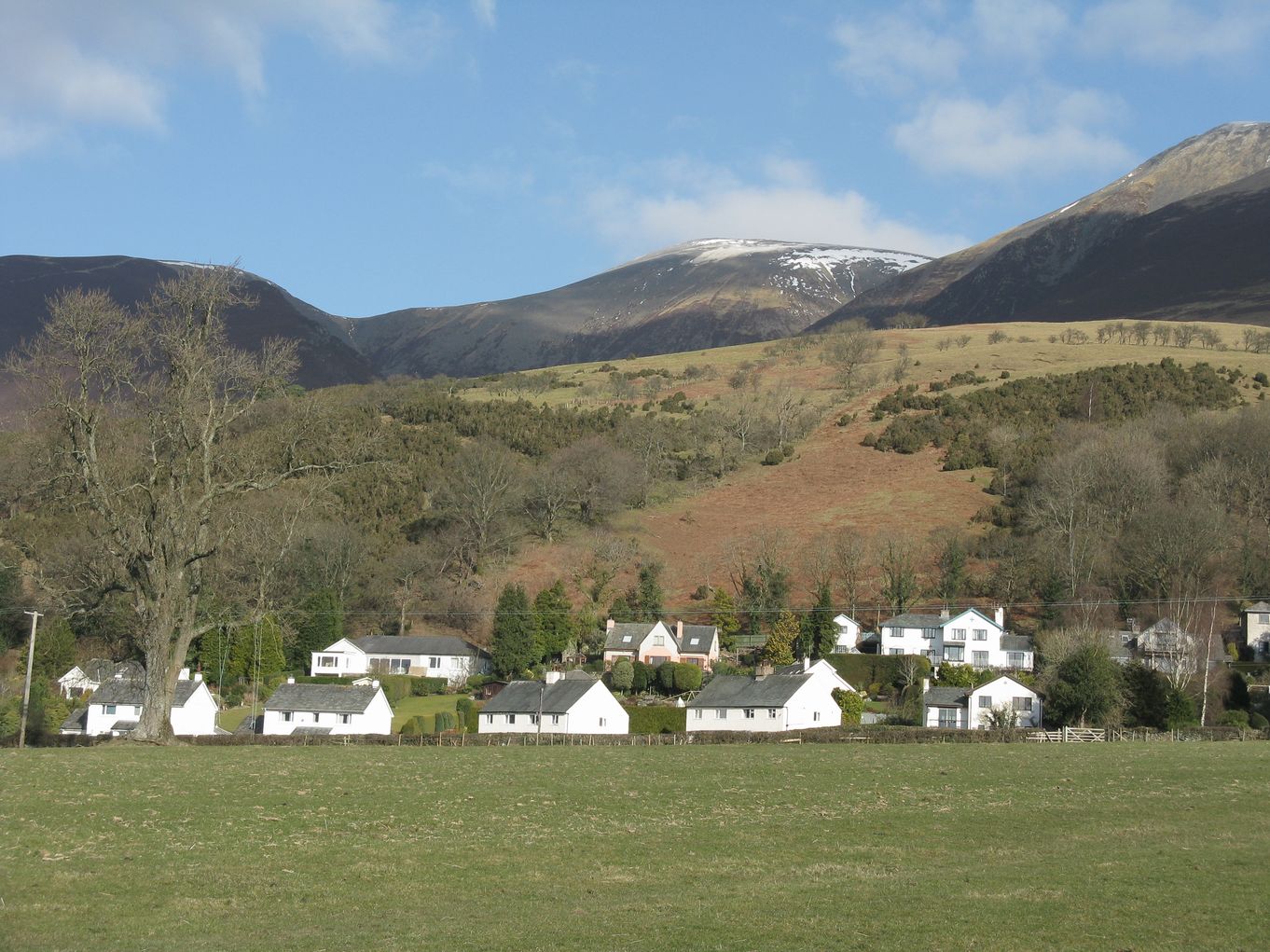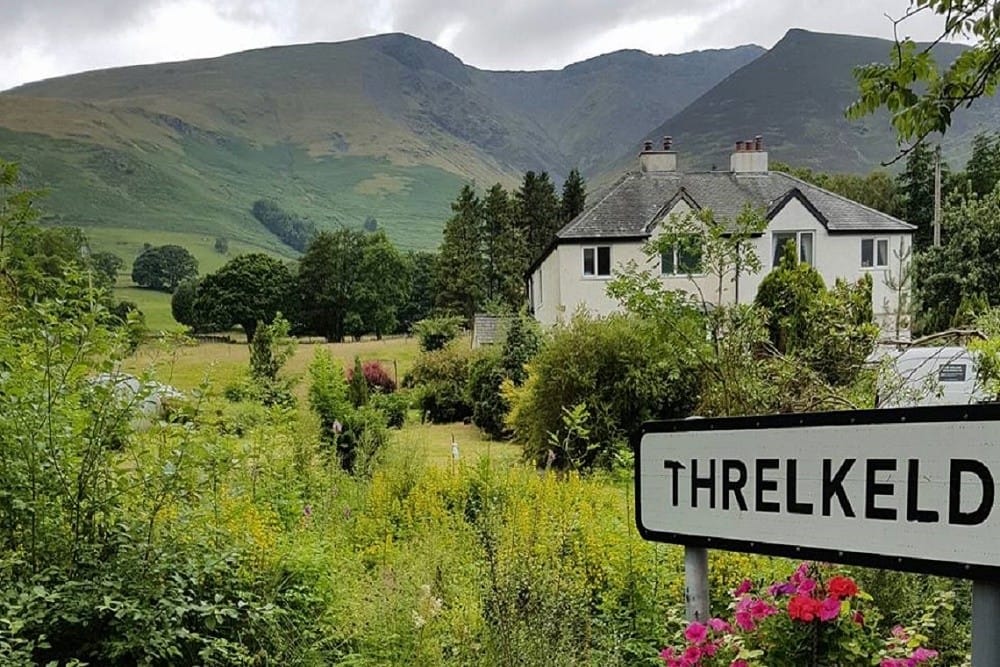6 Villages Around Keswick and What To Do When You Visit
Keswick is an idyllic Lake District market town which draws hundreds of thousands of visitors every year - and we can see the appeal! But if you venture just a few miles outside of Keswick, there are also plenty of picturesque villages to visit, perfect for peaceful retreats and to really experience the Lake District lifestyle. We’ve put together a guide to six of the villages around Keswick which you should visit during your stay.
Portinscale
Portinscale is the closest village to Keswick, at just one mile away, and is also located on the shores of Derwentwater, just like Keswick. There’s a fantastic variety of things to do in Portinscale for visitors, as well as a range of accommodation, which makes it a great village base for your trip to the Lake District.
Portinscale is ideally based for those who enjoy walking and watersports. You can start many popular walks easily from Portinscale, including Catbells, Causey Pike, the Newlands Round, and the Coledale Horseshoe, as well as some great walks in the Newlands Valley. On the very edge of Derwentwater, visitors can enjoy getting out on the lake by hiring canoes, rowing boats, kayaks, dinghys and windsurfers, or even taking lessons, at Derwentwater Marina. You can also walk to Nichol End from Portinscale, and join the Keswick Launch for a leisurely cruise across the lake.
If you’re looking for a bite to eat in Portinscale The Chalet Tearooms and Restaurant, which serves high quality breakfast, lunch, and afternoon tea. The Lingholm Kitchen and Walled Garden is also well worth a visit, serving a range of locally sourced foods, artisan breads, home baked cakes and real barista coffee, with a beautiful walled garden to explore, which is free to enter. Beatrix Potter wrote both Squirrel Nutkin and Mrs Tiggywinkle books at Lingholm; Mr McGregor’s garden in The Tale of Peter Rabbit was apparently inspired by the Lingholm kitchen gardens. The Lingholm estate is just a ten minute walk from Portinscale along the Catbells path.
To find out more about visiting Portinscale, click here.
Braithwaite
Braithwaite is only 2.5 miles from Keswick, and is just a short car ride away via the A66. Braithwaite is home to a village shop and some pubs, but doesn’t have as many shops and restaurants as Keswick. However, it is the ideal village to stay in if you enjoy walking, and want to get out and about on the fells during your stay in the Lakes.
Some of the many walks starting from Braithwaite include Grisedale Pike, Barrow, Outerside and the Coledale Round, or into the Newlands Valley. Causey Pike and the Coledale Horseshoe, which includes the Lakeland fells of Grisedale Pike, Eel Crag and Crag Hill , are also accessible from Braithwaite.
Braithwaite is also situated at the base of Whinlatter Pass, which is home to Whinlatter Forest, England’s only true mountain forest, which is about two miles up the pass. Whinlatter Forest is home to a fantastic visitor’s centre, brilliant cycle trails with cycle hire available from Cyclewise based up in the forest and the Go Ape treetop adventure and Forest Segway. There's also a children’s adventure playground, plus it's a great place to spot local wildlife, including ospreys and red squirrels. You can find out more about what to do at Whinlatter Forest here.
Above Braithwaite are the remains of Force Crag Mine, which was the last mineral mine to be worked in the Lake District. You can take a National Trust guided tour of the mine, which has been restored and cared for by volunteers.
You can find out more about visiting Braithwaite here.
Thornthwaite
Three miles west of Keswick is Thornthwaite, a peaceful village with wonderful views across the valley and Bassenthwaite towards Skiddaw. Thornthwaite is on the edge of Whinlatter Forest, making it a great base for exploring the surrounding areas. Thornthwaite is less than a ten minute drive from Keswick, and is served by the X4/X5 bus service.
Whinlatter Forest is easily accessible via forest tracks, which also lead to the fells beyond. A popular footpath leads from the centre of the village along Comb Beck, into the heart of the forest. You can also enjoy walks around Powter How wood to Bassenthwaite Lake, an elevated route to Braithwaite, and a path across the valley towards Dodd and Skiddaw.
A well-known landmark in Thornthwaite is 'The Bishop', which is a whitewashed rock outcrop on the side of Barf, looking down over the village. This striking landmark is said to be a monument marking an 18th century legend, where the drunken Bishop of Londonderry, who was climbing the hillside on his pack horse to fulfil a bet with the landlord of the local inn, fell off his mount and died. The Bishop is well worth a visit for the lovely views over the village and beyond.
For days when you don’t feel like venturing out of the village, Thornthwaite Galleries is a must-visit. The gallery features artwork from over 140 local artists, exhibiting art such as paintings, wood turning, jewellery, pottery, textiles, and much more. There’s also a lovely tea shop, where you can enjoy home made cakes, scones, soups and toasted sandwiches. Thornthwaite Galleries is also fully wheelchair accessible, and dog-friendly.
Find out more about visiting Thornthwaite here.
Applethwaite and Millbeck
The villages of Applethwaite and Millbeck can be found at the foot of the south-facing slope of Skiddaw, one of the highest mountains in the Lake District. They are about one and two miles respectively from Keswick, and are part of Underskiddaw Parish, in an area of some truly spectacular scenery.
Throughout the late eighteenth and nineteenth centuries, the main industries of Underskiddaw Parish were farming and wool production: the mill in Applethwaite was used in particular for manufacturing woollen blankets. These water-powered mills were eventually replaced by steam-powered mills in Yorkshire, but the remains of the mills in Applethwaite and Millbeck can still be seen today.
The parish still looks very similar to how it would have done in the nineteenth century and is a quiet, unspoilt retreat in the Lakes. The parish is also a good place for spotting local wildlife: road signs offer a warning to drivers to watch out for red squirrels, and the osprey nesting site near Bassenthwaite Lake is not far from the villages.
Applethwaite and Millbeck are both great starting points for some fantastic walking routes. Applethwaite is the starting point to walk up Skiddaw, one of the highest mountains in the Lake District. Other fell walks which can begin from Millbeck and Applethwaite include Dodd, Lonscale Fell, and Latrigg, as was as many additional footpaths and lower level walks. If you want to try and spot some ospreys, the viewing platform at Dodd Wood is the place to go, and Dodd Summit offers stunning views overlooking Bassenthwaite Lake.
Find out more about visiting Applethwaite and Millbeck here.
Threlkeld
Threlkeld is a thriving village which makes an ideal base for exploring the Lake District and the Eden Valley. The village is home to a church, school, two pubs, a golf course, and a cricket club, as well as a children’s playground and playing field, yet is still a quiet and peaceful retreat. The village hall has been refurbished, and now includes a coffee shop, serving tea and coffee, soft drinks, soups, sandwiches, and homemade cakes, with stunning views looking out over Clough Head and the Helvellyn range.
Threlkeld is on the route of the popular Coast to Coast (C2C) cycling route from Workington to Sunderland, and is a great place to stay for all types of leisure activities, especially walking; you can climb both Blencathra and Skiddaw from Threlkeld, as well as enjoying lots of other low level and riverside walks.
You can also visit the Threlkeld Quarry and Mining Museum, which is a fun day out for all the family. The museum is open 7 days a week from the Easter holidays to October half term and offers an interactive underground tour of a realistic mining experience, a geological and mining museum, mineral panning, and the Threlkeld Quarry Railway.
To find out more about visiting Keswick, visit our website.





